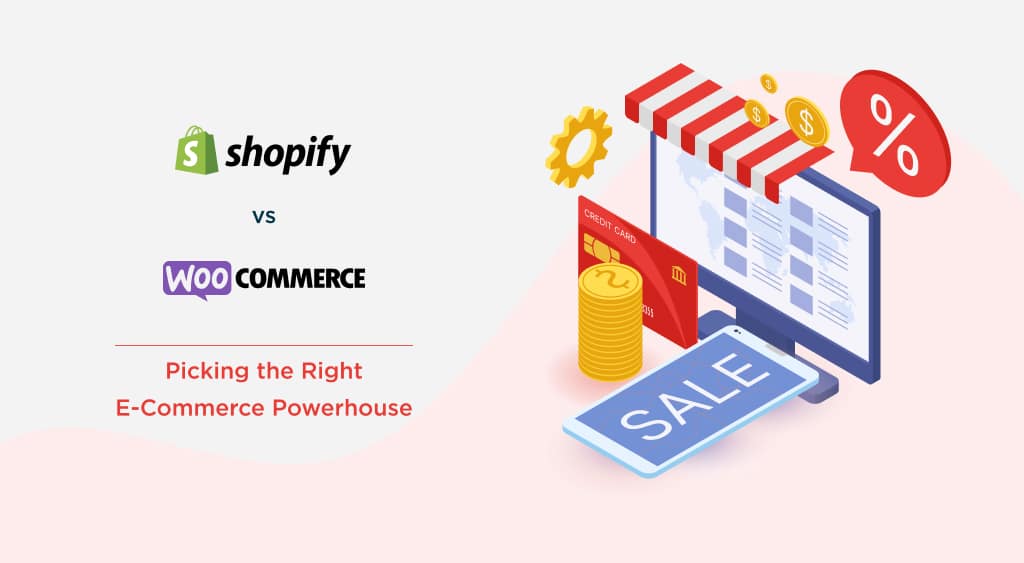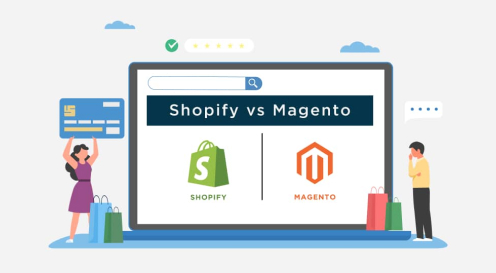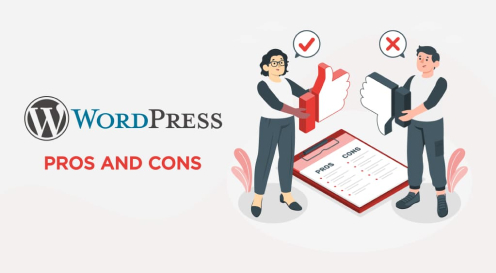Shopify vs WooCommerce: Picking the Right E-Commerce Powerhouse
14 Mar 2024 | 9 min read
Introduction to E-Commerce Platforms
Choosing the right e-commerce platform is crucial for an online business to succeed. With numerous options available, it’s essential to understand each platform’s key features and benefits before deciding. This article will compare Shopify and WooCommerce, two popular e-commerce platforms.

Importance of Choosing the Right E-Commerce Platform
As the foundation for your online store, choosing the right e-commerce platform is crucial. A well-suited platform can provide the necessary tools and features to create a seamless and engaging shopping experience for your customers. It can impact various aspects, such as website design, customization options, inventory management, payment gateways, and marketing capabilities. Choosing the right platform allows you to streamline operations, attract customers, and drive sales.
Overview of Shopify and WooCommerce
Shopify and WooCommerce are two widely used e-commerce platforms with strengths and features.
Shopify, a fully hosted platform, can build and manage online stores. It provides a user-friendly interface, allowing even those without technical expertise to create a professional-looking website. It is easy to customize the design of your store with Shopify’s many themes and templates. It also provides extensive app integrations and a robust support system, making it suitable for businesses of all sizes.
WooCommerce, on the other hand, is a WordPress plugin that transforms your WordPress website into a fully functional e-commerce store. It provides high flexibility and customization options, as it is built on an open-source platform. With WooCommerce, you have complete control over your store’s design and functionality. You can customize your store with a wide range of themes and extensions. WooCommerce is particularly popular, but they have a website that wants to add e-commerce functionality. For a detailed comparison between Shopify and WordPress, check out our article on WordPress vs Shopify.
The best way to choose an e-commerce platform is to understand its unique features and benefits. As we proceed, we will examine the pros and cons of each platform, as well as compare them.
Shopify: The Pros and Cons
When considering an e-commerce platform, Shopify is a popular choice for businesses of all sizes. The platform is reliable and user-friendly due to its many features and benefits. However, it’s essential to understand both the advantages and limitations of Shopify before making a decision.
Key Features and Benefits of Shopify
Shopify comes with a host of features designed to simplify the process of setting up and managing an online store. The following are some of the critical advantages of using Shopify:
- Ease of Use: Beginners can easily set up their online store with Shopify’s intuitive interface.
- Hosted Solution: As a fully hosted platform, Shopify handles web hosting, security, and software updates, allowing entrepreneurs to focus on their business instead of technical aspects.
- Design and Customization: With Shopify, businesses can build an online store with customizable themes and templates. Additionally, the platform allows customization through HTML, CSS, and Shopify apps to extend functionality.
- Payment Options: Businesses can offer seamless checkout experiences to their customers using Shopify’s payment gateways. From popular options like PayPal and Stripe to regional payment providers, Shopify provides flexibility in accepting payments.
- Mobile Commerce: Shopify offers mobile-responsive themes and a mobile app to enable store owners to manage their business from anywhere.
Limitations and Drawbacks of Shopify
While Shopify offers numerous benefits, it’s essential to consider its limitations as well:
- Transaction Fees: Apart from regular payment gateway fees, Shopify charges transaction fees for each sale made through external payment providers. These fees can add up for businesses with high sales volumes, depending on the pricing plan.
- Costs: While the basic Shopify plan is reasonably priced, additional charges may arise from premium themes, app subscriptions, and other customization needs. This can increase the overall expenses for businesses on Shopify.
- Limited Blogging Capabilities: Although Shopify includes a built-in blogging platform, it may offer different extensive features and functionalities than dedicated blogging platforms like WordPress.
- Advanced Customizations: While Shopify allows for basic customizations, some advanced customizations may require coding knowledge or the help of a Shopify developer.
- SEO Limitations: While Shopify provides some built-in SEO features, it may offer different flexibility and control than standalone CMS platforms like WordPress. However, Shopify offers SEO plugins that can help enhance the store’s visibility in search engine results.
Considering these pros and cons of Shopify is crucial when deciding whether it is the right e-commerce platform for your business. Your specific needs and goals can help you make an informed decision. For more comparisons between Shopify and other CMS platforms, check out our articles on Shopify vs. Magento and Shopify vs bigcommerce.
WooCommerce: The Pros and Cons
When comparing e-commerce platforms, WooCommerce stands as a strong competitor to Shopify. This plugin transforms your WordPress website into an online store. The main features, benefits, and limitations of WooCommerce will be discussed in this article.
Key Features and Benefits of WooCommerce
- Flexibility: Users can customize their online store with WooCommerce’s high level of customization. Themes and extensions enable you to create a unique shopping experience.
- Integration with WordPress: Being built on WordPress, WooCommerce seamlessly integrates with the powerful content management system. With this integration, your online store can benefit from the extensive WordPress ecosystem, including plugins and themes.
- Scalability: WooCommerce is highly scalable, making it suitable for businesses of all sizes. Whether you’re just starting out or already have an established business, WooCommerce can accommodate your growth and handle many products and transactions.
- Cost-effective: You can download and use WooCommerce for free. Compared to other e-commerce platforms, themes, extensions, and hosting can be more affordable.
- SEO-friendly: Your online store can be optimized for better search engine visibility with WooCommerce, increasing its chances of attracting customers.
Limitations and Drawbacks of WooCommerce
- Technical expertise required: Unlike Shopify, a fully hosted platform, WooCommerce requires you to handle specific technical aspects, such as setting up web hosting, managing security, and performing regular updates. This may require some technical knowledge or the assistance of a web developer.
- Additional costs for extensions: While WooCommerce is free, specific extensions and plugins may come at an additional cost. These costs can add up depending on the particular features and functionalities you require for your online store.
- Responsibility for maintenance: WooCommerce requires regular maintenance to ensure optimal performance and security as an open-source platform. This includes updating plugins, themes, and WordPress itself. Keeping up with maintenance tasks will ensure your online store is protected from security threats.
- Lack of dedicated support: WooCommerce needs to provide reliable customer support. While forums and community resources are available, resolving technical issues or receiving personalized assistance may require help from third-party developers or experts.
Despite these limitations, WooCommerce remains popular for businesses looking for a customizable and versatile e-commerce solution. Its integration with WordPress, flexibility, and scalability are key advantages that make it a strong competitor in the e-commerce platform market. Consider your specific needs and technical capabilities when deciding whether WooCommerce is the right choice for your business.
Feature Comparison: Shopify vs. WooCommerce
When comparing Shopify and WooCommerce, it’s essential to consider various features that can impact your e-commerce experience. Here, we will compare these two platforms based on ease of use and setup, design and customization options, pricing and costs, SEO and marketing capabilities, and payment and shipping options.
Ease of Use and Setup
With its user-friendly interface, Shopify makes it easy for beginners to set up an online store. It provides a hassle-free experience and takes care of hosting, security, and updates. On the other hand, WooCommerce, being a plugin for WordPress, requires more technical proficiency to set up and manage. However, it offers greater flexibility and customization options for those familiar with WordPress.
Design and Customization Options
Professionally designed and mobile-responsive themes are available on Shopify. You can create your own branded store using the intuitive drag-and-drop editor. WooCommerce, built on WordPress, provides even more design flexibility. It lets you fully customize the design and functionality of your store using plugins and coding.
Pricing and Costs
Subscription-based Shopify offers different pricing plans, which include hosting, security, and customer service. While it has a monthly cost, it eliminates the need for separate hosting and technical maintenance. WooCommerce, being open-source, is free to use, but you will need to pay for hosting, domain registration, and any additional plugins or themes you may require. The overall cost of running a WooCommerce store can vary depending on your requirements.
SEO and Marketing Capabilities
Shopify has built-in SEO features, allowing you to optimize your store for search engines. It provides tools for meta tags, sitemaps, and URL customization. Additionally, Shopify offers various marketing features, such as discount codes, abandoned cart recovery, and integration with social media platforms. WooCommerce, being part of WordPress, benefits from the extensive SEO capabilities of the CMS. SEO plugins help you implement advanced marketing strategies and optimize your store’s visibility.
Payment and Shipping Options
Shopify offers many payment gateways, including its payment solution, Shopify Payments. It also integrates with popular third-party payment providers. In terms of shipping, it provides real-time carrier shipping rates and supports multiple shipping options. WooCommerce offers similar payment gateway integrations and provides flexibility in choosing your preferred providers. In addition, it integrates with shipping plugins and offers real-time shipping calculations.
By comparing these essential features, you can decide whether Shopify or WooCommerce is the right e-commerce platform for your business. Consider your specific needs, technical expertise, budget, and long-term goals to choose the platform that best aligns with your requirements.
Which Platform is Right for You?
There are several factors to consider when choosing an e-commerce platform for your online business. Choosing between Shopify and WooCommerce requires understanding their advantages and limitations.
Factors to Consider when Choosing an E-Commerce Platform
- Ease of Use and Setup: Consider your level of technical expertise and the comfort of setting up and managing your online store. Shopify offers a user-friendly interface and a streamlined setup process, making it an excellent option for beginners. On the other hand, WooCommerce, being a WordPress plugin, requires more technical knowledge and may require additional setup steps.
- Design and Customization Options: Evaluate each platform’s design flexibility and customization capabilities. Shopify provides a wide range of professionally designed themes and allows for easy customization. WooCommerce, built on WordPress, offers extensive design options through various themes and plugins.
- Pricing and Costs: Examine each platform’s pricing structure and associated costs. Shopify offers a straightforward pricing model with different plans, including transaction fees for certain payment gateways. WooCommerce is free to use, but you’ll need to consider costs for hosting, domain registration, and extensions.
- SEO and Marketing Capabilities: Assess each platform’s SEO features and marketing tools. Shopify includes built-in SEO features and offers various marketing tools and integrations to help you optimize your online store. WooCommerce, a WordPress plugin, benefits from the vast array of SEO and marketing plugins available.
- Payment and Shipping Options: Consider each platform’s available payment gateways and shipping integrations. A range of payment options and shipping partnerships are available on Shopify. WooCommerce provides flexibility in choosing payment gateways and shipping providers, but you must set them up separately.
By weighing these factors, you can determine which platform aligns best with your requirements, technical abilities, and budget.
Conclusion: Making an Informed Decision
There are several factors to consider when choosing between Shopify and WooCommerce. Shopify may be the right choice if you’re looking for a user-friendly, all-in-one solution with easy setup and a range of built-in features. On the other hand, if you prefer WordPress’s flexibility and customization options and want complete control over your online store, WooCommerce might be the better fit.
The ease of use, design options, pricing, SEO capabilities, and payment and shipping integrations should all be considered when choosing. It’s also worth exploring other e-commerce platforms for comparison, such as Shopify vs. Magento, Shopify vs. Squarespace, and Shopify vs. Wix, to ensure you choose the platform that best suits your unique business requirements.


